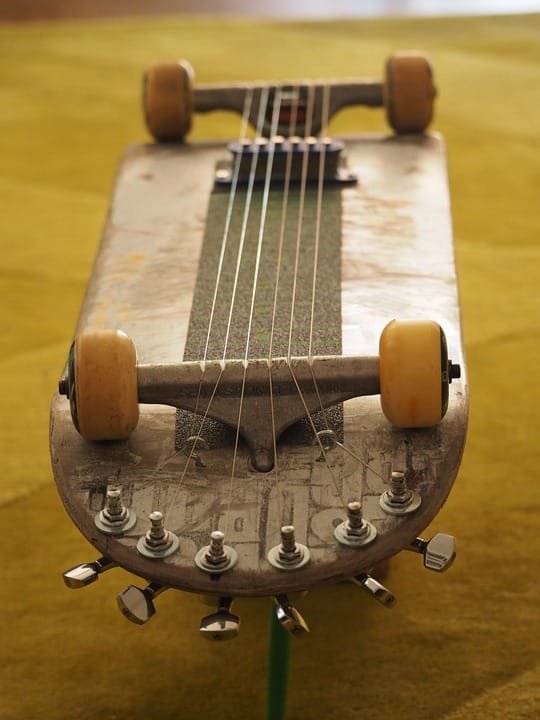The Thrill of the Hunt: Uncovering Hidden Gems at Thrift Stores
As I wandered through the thrift store, the aroma of second-hand fabric and the rustling of clothes in the racks were like music to my ears. I wasn’t just looking for a good deal; I was on a mission to uncover hidden gems and transition to a more sustainable wardrobe. Sustainable fashion isn’t just about the planet; it’s about self-expression and personal style.
What’s the Problem with Fast Fashion?
The fast fashion industry has a dark side. According to the United Nations, the fashion industry is responsible for around 10% of global carbon emissions, with most of those emissions coming from production and distribution (1). That’s equivalent to the emissions of the entire aviation industry! But it’s not just about carbon emissions. The production and disposal of cheap, trendy clothes lead to environmental degradation, exploitation of workers, and waste.
[Image: A graph illustrating the environmental impact of fast fashion, with arrows pointing to rising emissions and pollution.]Sustainable Fashion to the Rescue!
So, what’s the alternative? Sustainable fashion is a movement that promotes eco-friendly practices in clothing production and consumption. It’s not about sacrificing style for sustainability; it’s about embracing slow fashion, eco-friendly materials, and upcycling.
[Image: A photograph of a slow fashion boutique with vintage-inspired designs.]The Benefits of Thrift Shopping
Thrift shopping is an essential part of my sustainable fashion journey. Not only does it reduce waste, but it also promotes creative problem-solving and resourcefulness. I’ve discovered that some of the best thrift stores have a treasure trove of unique pieces just waiting to be found. With patience and a keen eye, you can uncover one-of-a-kind statement pieces and mix-and-match staples.
[Infographic: Tips for successful thrift shopping, including how to find hidden gems and avoid common pitfalls.]My Favorite Eco-Friendly Brands
When it comes to sustainable fashion, there are plenty of amazing brands doing their part. I love brands like Patagonia, People Tree, and H&M Conscious, which prioritize environmental sustainability and social responsibility. From organic cotton to recycled materials, these brands are setting the bar high for the industry.
[Image: A photo of Patagonia’s flagship store in California, showcasing their commitment to environmental sustainability.]Upcycling: Creative Clothing Makeovers
Upcycling is the process of transforming old or discarded materials into new, high-quality pieces. I’ve tried my hand at upcycling and love the thrill of turning a plain white shirt into a trendy corset. You can use hot glue, needle and thread, or even machine embroidery to create unique embellishments. With a little creativity, you can turn old clothes into new works of art.
[Video: A step-by-step guide on how to upcycle an old denim jacket into a trendy bucket hat.]Maintaining Your Clothes: Simple Swaps for Sustainability
It’s not just about buying sustainable; it’s also about taking care of what you already have. I’ve found that a few simple swaps can make a big difference. Switch to natural fibers, wash clothes in cold water, and hang them to dry. By doing so, you can extend the life of your clothes and reduce the risk of microplastic pollution.
[Image: A graphic illustrating the impact of washing clothes in hot water and machine drying.]Conclusion
Transitioning to sustainable fashion takes time, effort, and a willingness to take the leap. It’s not about sacrificing style; it’s about embracing the thrill of the hunt and uncovering hidden gems at thrift stores. By supporting eco-friendly brands, upcycling old clothes, and adopting sustainable practices, you can join the movement and make a difference. So, take the challenge and start your sustainable fashion journey today!
FAQs
Q: How can I start transitioning to sustainable fashion?
A: Start by researching eco-friendly brands and thrift stores. Take the challenge to wear one piece of second-hand clothing per week and gradually transition to more sustainable options.Q: What are some common pitfalls to avoid when thrift shopping?
A: Common pitfalls include ignoring size labels, trying on too much at once, and getting overwhelmed by options. Tip: start with small steps, and try on one item at a time.- Q: Can I still achieve a unique look without breaking the bank?
A: Absolutely! Thrift shopping, upcycling, and mix-and-matching can lead to a unique, high-fashion look without sacrificing sustainability.
References
- United Nations: "Fashions That Don’t Cost the Earth"
I hope this article provides value to readers and encourages them to adopt sustainable fashion practices. Happy hunting!








Leave a Reply